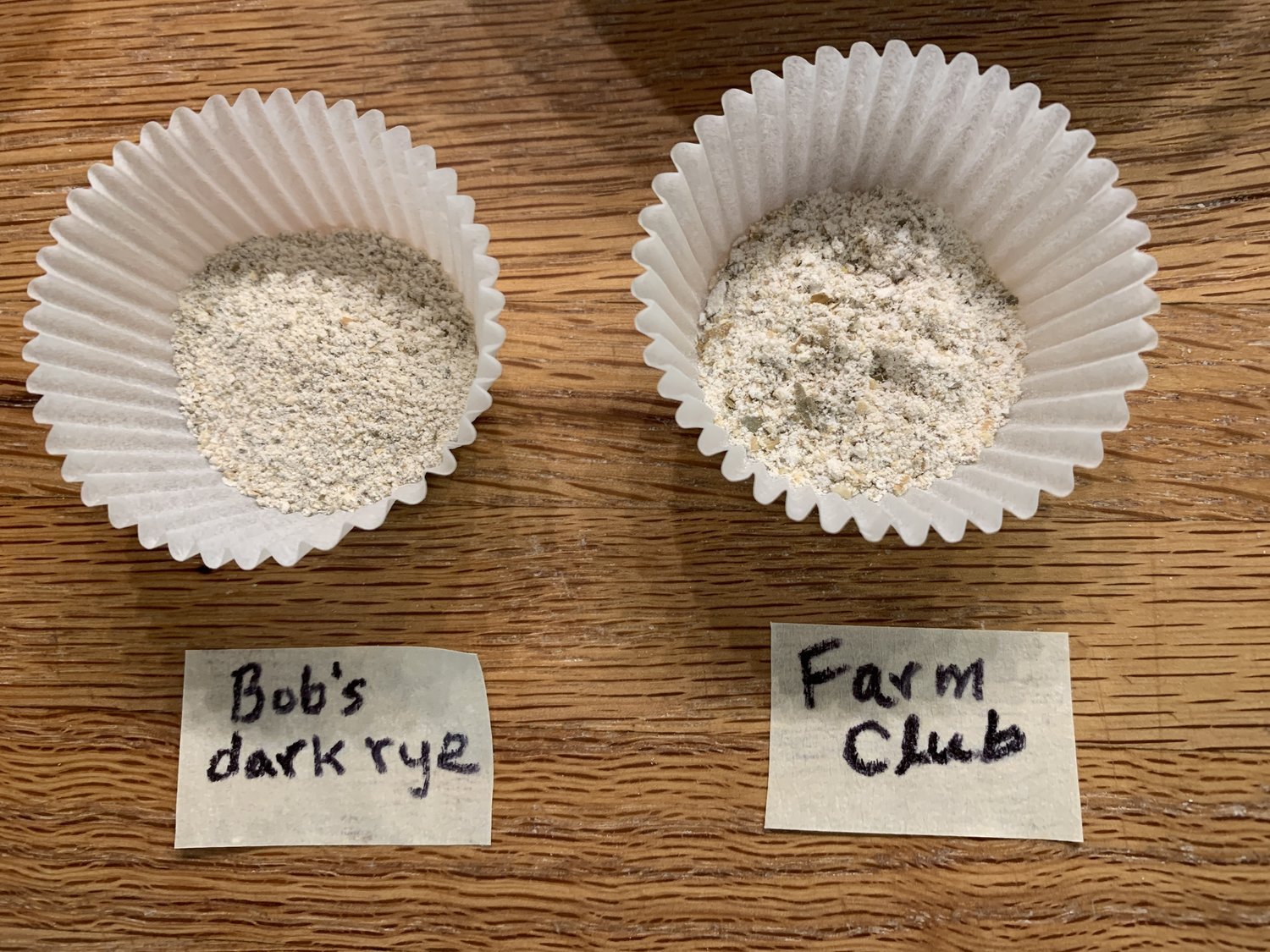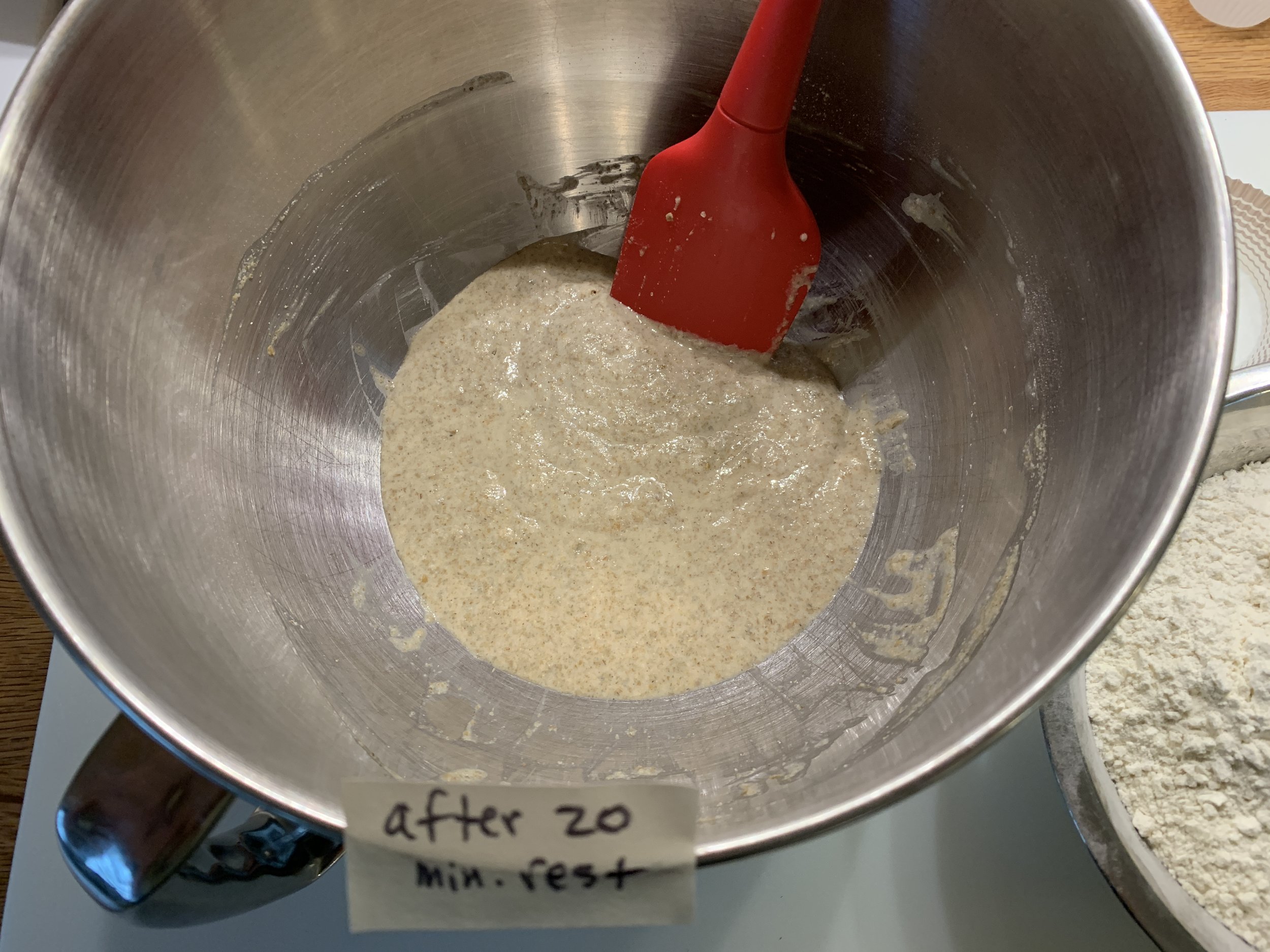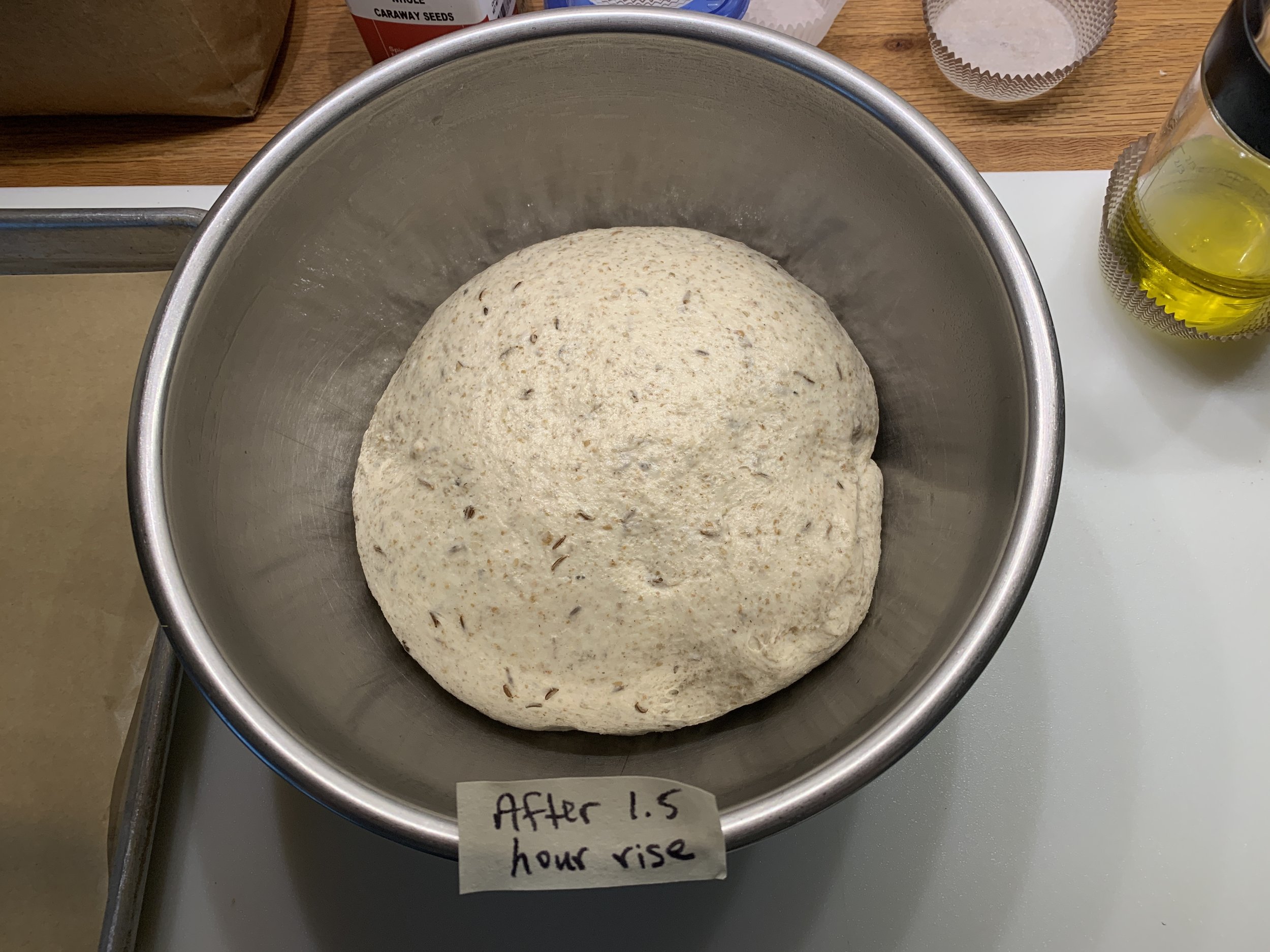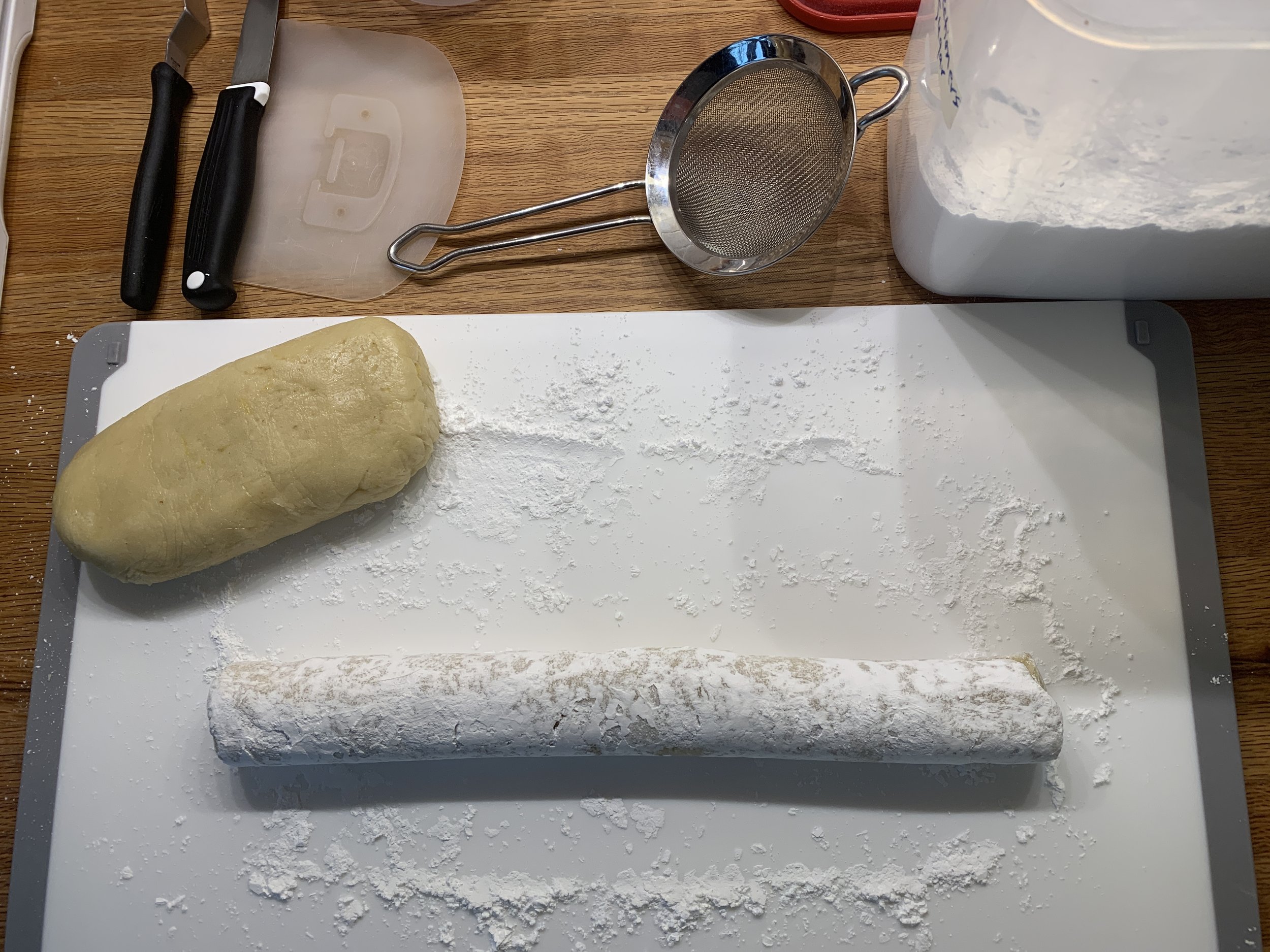Caraway rye rolls
/Rye flour has become a more frequently used ingredient for me in recent years, so when Steve requested a caraway rye bread of some sort, we procured a jar of caraway seeds for that very purpose. This is my first bake with those seeds.
After a quick look online I learned that caraway seed is also referred to as Persian cumin and is the fruit of a plant from the same family as fennel, carrots, and anise. Interesting!
The recipe is based on one I found on King Arthur Baking Company’s site. I tweaked it a tad and decided to make rolls instead of a loaf. Once you’re on their site you’ll find all sorts of recipes and indulgences.
Pssssst - there’s a “secret” ingredient - dill pickle juice! Not being a dill pickle eater, I have however enjoyed the flavor the juice can impart from enjoying my mom’s potato salad over the years. Gives it that certain je ne sais quoi.
Mise en place
Here’s the recipe. To begin you’ll blend 120 g medium or dark rye flour, 232 ml/one cup lukewarm dill pickle juice (or water), 4 teaspoons granulated sugar and 7 g / 2 1/4 teaspoons instant yeast in the bowl of a stand mixer fitted with the dough hook to make a very soft batter. Let that rest for 20 minutes to allow the rye flour to absorb some of the liquid.
Just blended - pretty loose
Getting more sludgy
Now add 120 g / 1/2 cup plain Greek yogurt (or sour cream), 7-14 g / 1-2 tablespoons caraway seeds (I did ~10 g - would go up to 14 next time!), 4 g / 3/4 teaspoon table salt (if using water instead of pickle juice, increase salt to 9 g / 1.5 teaspoons), 290 g / 2 1/3 cups all purpose flour.
Knead the dough on low-medium speed 5-7 minutes until smooth. It will be sticky - don’t add more flour. With lightly oiled hands do a fold set and form into a ball.
Let the dough rise until puffy, 60-90 minutes.
Gently deflate the dough and divide into nine portions (about 85 g or 3 ounces each).
Shape each portion into a rough ball and let rest 20 minutes under lightly oiled film wrap. Then proceed with final shaping, creating nice tight rounds. Place on a parchment lined sheet pan.
Cover with lightly oiled film wrap and let rise 1.5 hours. During winter months I’ll use my turned off oven as a proof box. Place a bowl of warm water on the bottom rack and the tray of rolls above it. Just be sure to take them out before you heat your oven for baking!
Toward the end of the rise heat the oven to 350ºF.
Before popping them into the oven brush with water and make a crosshatch snip into the tops.
Bake 20-25 minutes until golden. Brush the tops with melted butter if desired. Cool and enjoy.
Steve and I enjoyed these a few ways: as tuna salad sandwiches; with a simple slice of cheese; with scrambled egg/chopped greens. The dill pickle juice makes for a wonderful flavor combo with the caraway. Yes.
Enjoy!





















